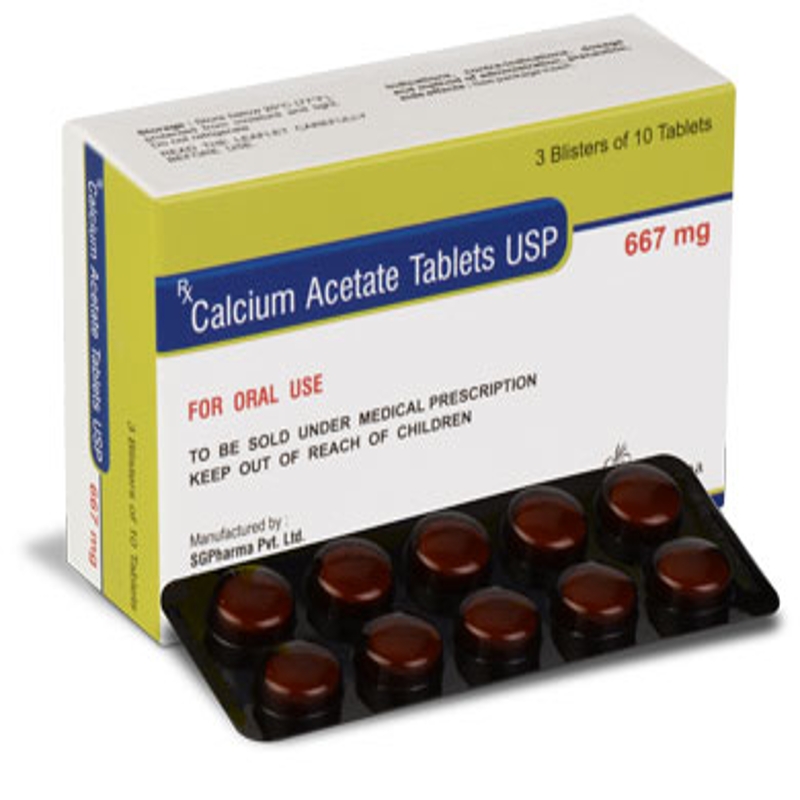-
Categories
-
Pharmaceutical Intermediates
-
Active Pharmaceutical Ingredients
-
Food Additives
- Industrial Coatings
- Agrochemicals
- Dyes and Pigments
- Surfactant
- Flavors and Fragrances
- Chemical Reagents
- Catalyst and Auxiliary
- Natural Products
- Inorganic Chemistry
-
Organic Chemistry
-
Biochemical Engineering
- Analytical Chemistry
-
Cosmetic Ingredient
- Water Treatment Chemical
-
Pharmaceutical Intermediates
Promotion
ECHEMI Mall
Wholesale
Weekly Price
Exhibition
News
-
Trade Service
foreword
Foreword ForewordThe clinical manifestations of many diseases are not as typical as described in textbooks, and the same diseases also have different manifestations between different patients
Routine blood is one of the most basic clinical examination items.
case after
case by case by caseThe patient, female, 60 years old, had dull pain in the upper abdomen for more than half a year, which worsened for more than 10 days, aversion to cold and fever, fatigue, anorexia, vomiting, and was transferred to another hospital.
Examination results from other hospitals (summary of two): 1.
After the patient was admitted to our hospital, the blood routine test was completed the next day.
After the patient was admitted to our hospital, the blood routine test was completed the next day.
The results showed that: anemia, thrombocytopenia, increased white blood cells with a significantly increased proportion of monocytes, among which the proportion and absolute value of monocytes increased, thrombocytopenia and decreased hemoglobin all violated the re-examination rules of our department (the absolute value of monocytes for the first time) value>1.
First, check that the state of the specimen is indeed dilute, which is in line with the state of anemia, and then check the alarm information of the instrument: primitive cells? Abnormal lymphocytes? immature granulocytes? Nucleated red blood cells, mononucleosis, lymphocytosis, leukocytosis, anemia, thrombocytopenia
Microscopic examination by manual push-piece showed that the platelets did not aggregate under the microscope, and the number was consistent with the results of the instrument.
So far, the culprit has been clearly directed, blood disease
case analysis
case study case studyThe common clinical manifestations of leukemia patients are dizziness, fatigue, fever, infection, bleeding, bone pain, with or without hepatosplenomegaly and lymphadenopathy.
The patient's blood routine showed anemia, thrombocytopenia, and the proportion and absolute value of monocytes increased significantly.
Auer bodies are red-stained thin rod-like substances in the cytoplasm of leukocytes in peripheral blood or bone marrow smears, ranging from one or several, with a length of 1 to 6um.
Literature Review
literature review literature reviewChronic myelomonocytic leukemia (CMML) is the most common myelodysplastic/myeloproliferative neoplasm (MDS/MPN), with an annual incidence rate of (3–4)/100,000 [1], with a median age at diagnosis of 65 -70 years old, young people are rare
The 2016 WHO classification of myelodysplastic/myeloproliferative neoplasms (MDS/MPN) includes [2]:
1.
2.
3.
JMML (Juvenile Myelomonocytic Leukemia)
4.
MDS/MPN-RS-T (myelodysplastic/myeloproliferative neoplasm with ring sideroblasts and thrombocytosis)
5.
MDS/MPN-U (myelodysplastic/myeloproliferative neoplasm, unclassifiable)
CMML is a disease with peripheral blood MO#>1.
0×109/L, MO%>10%, with abnormal morphological development, bone marrow and peripheral blood blasts <20%, and it has the potential risk of transformation to acute leukemia
.
The diagnostic criteria for CMML given by WHO are [2]:
A.
Peripheral blood mononuclear cells continued to increase (>1.
0×109/L), and the monocytes counted more than 10% of the WBC count
.
B.
Does not meet the diagnostic criteria of WHOBCR-ABL positive CML, PMF, PV and ET
.
C, PDGFRα, PDGFRβ, FGFR1 rearrangement negative, PCM1-JAK2 mutation negative (especially with eosinophilia), bone marrow and peripheral blood (myeloid) blasts <20%, one or more lineages (myeloid) ) pathological hematopoiesis
.
D.
If there is no pathological hematopoiesis or pathological hematopoiesis is rare, the following conditions must be met to be diagnosed:
1.
Presence of acquired clonal cellular or molecular genetic abnormalities
2.
Mononucleosis persisting for at least 3 months
3.
Exclude other causes of mononucleosis (such as infection, inflammation, and tumor)
The minimum diagnostic criteria are as follows in Table 1.
According to the WHO (2016) classification criteria: According to the proportion of peripheral blood and bone marrow blasts, they are further divided into the following 3 types: ① blasts in peripheral blood <2% and (or) in bone marrow <5% CMML-0 is diagnosed as CMML-0; ② 2% to 4% of blast cells in peripheral blood and/or 5% to 9% of bone marrow are diagnosed as CMML-1; ③ 5% to 19% of blast cells in peripheral blood, 10% to 19% of bone marrow, and (or) Auer body, diagnosed as CMML-2
.
Table 1 Minimum diagnostic criteria for typical chronic myelomonocytic leukemia (CMML)
Table 1 Minimum diagnostic criteria for typical chronic myelomonocytic leukemia (CMML) Table 1 Minimum diagnostic criteria for typical chronic myelogenous leukemia (CMML)Differential diagnosis from other diseases: 1) Reactive mononucleosis: subacute bacterial endocarditis, tuberculosis, malaria infection, Epstein-Barr virus infection, syphilis, typhoid, chronic and acute autoimmune diseases, etc.
A careful history and, if necessary, laboratory tests are performed to rule out these possible causes and diseases that can lead to reactive mononucleosis
.
(2) Clonal hematologic diseases with mononucleosis: clonal hematologic diseases with mononucleosis include MDS with mononucleosis, monocytic AML, MPN with mononucleosis, and GATA2 deficiency with Mononucleosis, juvenile myelomonocytic leukemia (JMML) and histiocytosis, etc.
The overall prognosis of CMML patients is poor, and the application of some new drugs may prolong the survival of patients and improve the quality of life
.
Allogeneic hematopoietic stem cell transplantation has the potential to cure the disease in a small fraction of patients who achieve complete remission with newer drugs
.
Summarize
summary summaryPrimitive and progenitor-like cells were seen in the peripheral blood of the patient in this case, but the overall proportion was less than 20%.
Auer corpuscles were seen in the peripheral blood.
After further examination in a foreign hospital, the diagnosis of CMML was difficult.
The final diagnosis can be inferred: the proportion of blast cells in the bone marrow smear of this patient should be less than 20%, and the corresponding gene detection has been carried out, AML with recurrent chromosomal abnormalities in WHO, and WHOBCR-ABL positive CML, PMF, PV, ET diagnosis are excluded.
Criteria, excluding other causes of mononucleosis, and because the patient's blood film showed Auer bodies, the final diagnosis should be CMML-2
.
The patient's treatment effect was not good after symptomatic treatment of "pneumonia" and "functional gastrointestinal disease" in a foreign hospital.
Why? Is it improper treatment or not finding the real culprit? One of the clinical manifestations of blood diseases is infection, and the common clinical infection sites are mostly respiratory tract infection, skin and mucous membrane infection and gastrointestinal tract infection, and the patient also has other clinical symptoms of leukemia, such as anemia (fatigue), bleeding,
etc.
Then, when the patient was treated in a foreign hospital at that time, did the corresponding inspection and examination be carried out, and whether any abnormality was found? The results are unknown.
Fortunately, the patient found clues in the first blood routine test after being transferred to our hospital, and the diagnosis was made in time, and the treatment was effective
.
It also reminds us again that the role of blood routine re-examination cannot be ignored
.
As inspectors, in the process of routine blood examination, we must strictly follow the microscopic examination rules formulated by the undergraduate office, always pay attention to the alarm information of the instrument, and operate in strict accordance with the regulations.
And there are indeed abnormal conditions, but we did not perform smear microscopy, which can easily lead to clinical misdiagnosis and missed diagnosis, which in turn affects the accuracy of clinical diagnosis and reduces the clinical treatment effect
.
In this case, the laboratory personnel pushed the film and microscopy in time to assist the clinic in clarifying the direction of diagnosis as soon as possible, avoiding "stomach pain and treating the stomach" and shortening the diagnosis time
.
Therefore, we should not only pay attention to the application of blood routine re-examination to ensure the quality of blood routine examination, but also realize the value of the examination in clinical diagnosis and treatment
.
Expert Reviews
Expert Comments Expert CommentsTan Junqing Director/Chief Technician of the Laboratory Department of Guangdong Second Hospital of Traditional Chinese Medicine
Tan Junqing Director/Chief Technician of the Laboratory Department of Guangdong Second Hospital of Traditional Chinese MedicineIn many cases, the patient sample information held by the laboratory cannot be fully fed back to the clinician, otherwise it will interfere with the clinician's audio-visual, and we must do this as the vanguard and the first filter to accurately extract the effective information behind the sample and feed it back to the clinic.
, not just a bunch of digital reports
.
Although our relationship with patients is not as close as that in clinical practice, we cannot ignore the value of our own in the process of patient diagnosis and treatment
.
With the increasing role of in vitro diagnosis in clinical diagnosis and treatment, our inspectors should continue to cultivate their own skills while strengthening their sense of responsibility
.
In terms of blood routine review alone, on the one hand, it is necessary to improve its ability to identify abnormal cells, and on the other hand, it is necessary to master the clinical manifestations of various blood diseases and the characteristics of laboratory test results, in order to be able to discern differences with discerning eyes and truly play the test.
value in clinical practice
.
leave a message here







